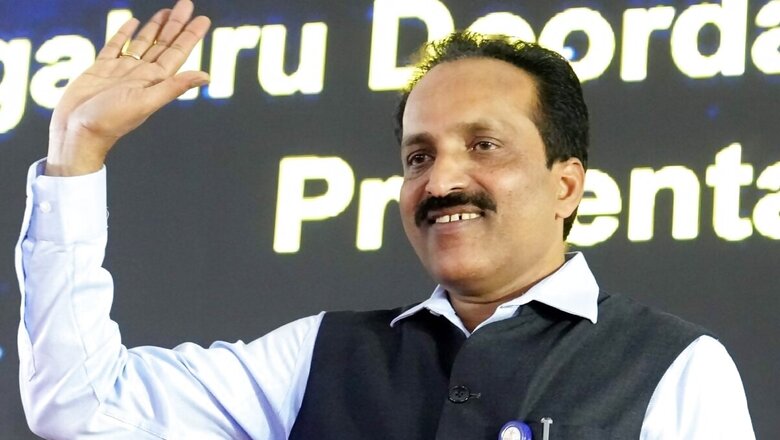
views
The Indian Space Research Organisation is going through one of its most exciting times with several ambitious projects being pursued by the agency. Even as Aditya-L1 completed its first halo orbit, ISRO has finished preliminary design works for module 1 of India’s space station.
Speaking exclusively to News18, ISRO chief Dr S Somanath said that the Bharatiya Antariksha Station module and protocol are ready. “The design of the Indian space station is ready, and it is on my table; the whole design and design protocol. It is beautiful to see that we are able to conceive for our first station that can be launched using our current rocket. But that’s not enough. We have to scale it up bigger, so a new rocket is needed, and a bigger space station module is needed. So we have divided the module into five units and the first two will be launched by current rocket LVM3, and the next three will be launched by new rocket NGLV,” he said.
Even as ISRO prepares to submit the Bharatiya Antariksha Station’s design plan to the government, another team at the country’s space agency has finished preliminary work for an ambitious mission to land on the moon, collect a lunar surface sample, and bring it back to Earth. The lunar sample return mission, which will be a key objective of Chandrayaan 4, has seen the team complete the initial work and is all set to undertake the detailed engineering work. “Background work is much more technical and that is happening. We have configured a complex mission of two rockets to handle these modules. Go to the moon, collect the sample, and come back. Preliminary work is done and detailed engineering work has to happen now,” said the ISRO chief.
In December last year, ISRO conducted a hop experiment of the Vikram Lander on the lunar surface and the propulsion module of Chandrayaan-3 was moved from an orbit around the moon to an orbit around the Earth using the available fuel in the Chandrayaan-3 module. This was seen as a precursor to the sample return mission and derived additional information for it.
Sunita Willimas extended stay: It is a very important lesson, as Ganganyaan is getting designed
Astronauts Sunita Williams and Butch Wilmore’s return to Earth has been delayed after their Boeing Starliner spacecraft experienced helium leaks from its service module and has been forced to remain docked at the International Space Station. Dr Somanath says there are key takeaways for the Indian space agency since it is designing a human space flight mission and it doesn’t have a space station of its own to fall back on in case of an emergency.
“It’s an important observation for us. In the first flight of a new spacecraft, getting into some difficulties is a very important lesson for anybody who is designing it. For me, as the Gaganyaan craft is getting designed, we look at it in many ways. How a situation can crop up…it could be this or other possibilities. We look at it in that manner. How to strengthen it in terms of the design, alternate ways how the crew can be saved in case we end up in a problem, these are topics of discussion today,” he said
Dr Somanath reiterated that ISRO was focused on carrying out the Gaganyaan mission without any flaw and with tests which are more in number than any other launch. “Gaganyaan is a long and difficult journey. We are attacking each one every day. We are trying to do the managerial task and technical execution tasks. There are challenges in terms of the number of tests. Compared to the regular launch vehicles, the number of tests is huge because the qualification requires that kind of demand. The entire process is scrutinised by committees other than ISRO. There are committees that will look at its reliability very critically before authorising anybody to fly. Human rating and high levels of reliability ratings are happening. We have to conduct missions without any flaws, and all of this going well. A little bit of stretching of time is happening but we are not concerned about it,” said Dr Somanath.
He said the mission would be so foolproof that it would be safe enough to put even a head of state in space. “Every life is precious so it (Ganganyaan) should be made for that (safe enough for a head of state),” he said.




















Comments
0 comment